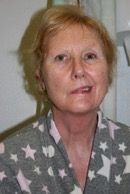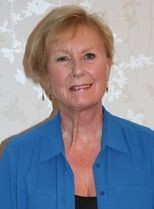Last week was Facial Palsy Awareness Week and to highlight it, I wanted to share my personal story…
I thoroughly enjoyed my career in education and gave no indication of slowing down. However, one morning I awoke with severe vertigo. I tried to get out of bed but this just instigated a series of vomiting and seizures. The transfer to the ambulance was horrific because any movement exacerbated the vertigo, causing vomiting and further seizures.
In hospital I was put in a bed with cot sides to prevent me falling out. Initially diagnosed with an ear infection, within days my ear became red, swollen and blistered – revealing shingles inside the ear. It slowly dawned on me that my face was becoming numb. I said to the consultant, ‘I can’t feel my face’. I thought I had had a stroke and I was very frightened and confused.
A second diagnosis revealed I had Ramsey Hunt Syndrome and immediately steroids, antiviral and antibiotic medication were administered. Within three days the whole side of my face was paralysed. My right eye would not close or blink and it was very sensitive to the light. My mouth drooped to one side which affected my speech and my right ear was painful and extremely swollen. Tinnitus later developed in the same ear. A lack of nasal secretions or saliva on the affected side meant I was continually thirsty, and I also experienced pain combined with facial spasms. I couldn’t get out of bed because my balance was greatly affected and I found it hard to concentrate due to extreme tiredness. Simple things like eating, drinking and cleaning my teeth suddenly became very difficult.
Ramsay Hunt Syndrome is caused by a virus that remains dormant after having had chicken pox in childhood, resulting in shingles in adulthood.
The challenging road to recovery
Due to the impact of drugs the main symptoms were quickly under control and further tests confirmed the diagnosis. I was referred to physiotherapy for exercises to improve my balance and given a patch and ointment to wear over the non-closing eye to prevent damage. Full recovery from Ramsay Hunt syndrome can take anywhere from months to two years and is not guaranteed.
I was enthusiastic in wanting to return to work but my confidence had taken quite a thrashing. A friend told me about someone with Bell’s palsy who had not ventured out of the house for twelve months and would not allow friends or relatives to visit her. I decided that I would not hide away and I was determined to get my life back on track.
With the support of my GP, Consultant and Occupational Health, five months later I returned to work. Initially very part-time, the hours would gradually be increased according to how I responded. Although very apprehensive, no one prepared me for the absolute exhaustion that accompanies Ramsay Hunt Syndrome. The effect is not only physical but also mental, causing confusion and a lack of concentration. I was unfit to drive as exhaustion affected my balance as well as my speech.
The struggles that ensued
Considered disabled by my GP and Consultant, I quickly found that my employer’s expectations were totally unrealistic. The anticipated part-time return quickly became a demanded full-time and even the tasks expected of me changed significantly without any consultation. I was unprepared for the draconian, aggressive and unrelenting stance of my employer, and after five months I became totally unfit for work and severely depressed.
I had never before experienced low mood or depression, but for many months I was in a constant suicidal state. Due to severe allergies I was unable to take any anti-depressants, and although I was referred to a psychologist there was a long waiting list. In desperation I privately engaged a recommended psychologist, but later also received therapy through the NHS. Both were excellent, and gradually helped me to turn around my thinking and also learn survival techniques for the future. It was explained that my experiences were the equivalent to having had two major traumas. After months of cognitive behavioural therapy I recovered some semblance of determination and began to work hard at a recovery.
Some hope ahead
Searching the internet one day I found an advert for facial nerve stimulation machine at a private clinic in the north of England. After investigation I spoke to the clinic and self-referred. After the initial assessment I was given facial exercises and the machine to use at home on a daily basis. Gradually there was a noticeable difference which included improvement in the facial synkinesis and less tension, with reduced muscle bulk in the cheek area. My eye was more ‘open’ and naturally blinking, not closing as much on mouth movements. Also, my mouth was more relaxed and I was able to smile in a near normal fashion.
I continue to maintain the use of the electrodes and can report significant facial improvement. Some aspects of the palsy will remain forever as a daily reminder of my experiences, and I have had two further episodes of shingles – but fortunately not as severe. The personal journey to recovery continues and although I am in a much more comfortable place, each day is still something of a challenge. Like my mental health I remain a ‘work in progress’, but at least now I can smile again.
Jeanette House | NWR individual member and trustee



